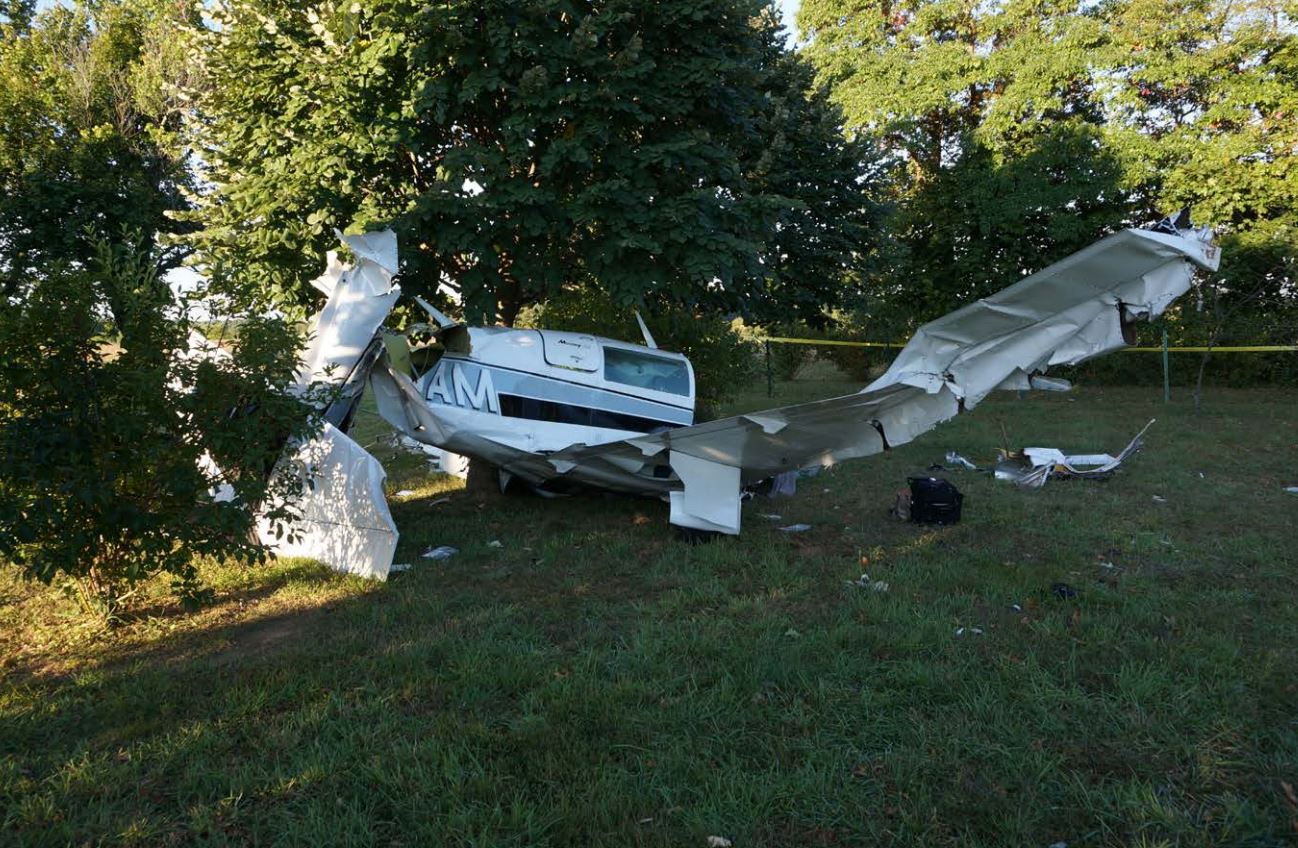
ASN Wikibase Occurrence # 190361
This information is added by users of ASN. Neither ASN nor the Flight Safety Foundation are responsible for the completeness or correctness of this information.
If you feel this information is incomplete or incorrect, you can submit corrected information.
| Date: | Sunday 25 September 2016 |
| Time: | 12:30 |
| Type: |  Mooney M20J |
| Owner/operator: | Private |
| Registration: | N526AM |
| MSN: | 24-0916 |
| Year of manufacture: | 1980 |
| Total airframe hrs: | 4690 hours |
| Engine model: | Lycoming IO-360-A3B6D |
| Fatalities: | Fatalities: 2 / Occupants: 2 |
| Aircraft damage: | Substantial |
| Category: | Accident |
| Location: | near Sky Manor Airport, Pittstown, NJ -
 United States of America United States of America
|
| Phase: | Landing |
| Nature: | Private |
| Departure airport: | Perkasie, PA (KCKZ) |
| Pittstown, NJ (N40) | |
| Investigating agency: | NTSB |
| Confidence Rating: |
The private pilot rented the airplane for a personal flight, flew to another airport, and picked up the passenger. The pilot and the passenger then flew to the airport where the accident occurred. During the first landing attempt, the airplane appeared to be traveling too fast on the final approach. During the touchdown, the airplane bounced, and the pilot aborted the landing, climbed out, and joined the traffic pattern. During the second landing attempt, the airplane was again fast on the approach, and it touched down about halfway down the runway on the nose wheel, then touched down on the main landing gear, bounced, and became airborne. The airplane bounced twice more, then touched down about 400 to 500 ft before the end of the runway and stayed on the runway surface. As the airplane approached the end of the pavement, witnesses heard the engine power increase as the pilot aborted the landing, and the airplane began to climb. According to some witnesses, the engine was not producing full power. As it approached a row of trees off the end of the runway, the airplane appeared to climb steeply, cleared the row of trees, and then abruptly banked steeply to the left, pitched nose down, and descended in a steep, nose-down attitude to ground impact.
Postaccident examination of the runway revealed propeller strike marks and a nosewheel tire mark about 1,747 ft from the threshold of the 2,900-ft-long runway, indicating that the pilot touched down past midfield in an improper nose-low attitude. Examination of the propeller revealed chordwise transfer marks and tip curling and polishing indicative of a propeller strike, which would have degraded the efficiency of the propeller and resulted in a loss of thrust during climb. The loss of control observed by the witnesses was consistent with the pilot attempting to climb even with the loss of thrust due to the damaged propeller, and exceeding the airplane's critical angle of attack, which resulted in an aerodynamic stall.
Security camera video recordings and wind information from a nearby airport indicated that a slight tailwind existed for landing on the chosen runway, which would have slightly increased the airplane's ground speed and ground roll during the landing. However, according to the airplane's pilot operating handbook, the landing ground roll under worse case conditions (maximum gross weight and an outside air temperature of 40°C) would have been about 956 to 1,118 ft; therefore, the runway length was adequate for a safe landing if the proper touchdown point had been achieved.
Although the pilot had 36 hours of flight experience in the accident airplane make and model, his most recent flight in this make and model was 10 months before the accident. Further, his most recent flight before the accident flight was in an airplane of lesser performance equipped with fixed landing gear and a fixed pitch propeller, and was about 8 months before the accident. According to his logbook, he did not meet the Federal Aviation Administration recent experience requirements to act as a pilot in command of an airplane carrying passengers.
Probable Cause: The pilot's improper landing touchdown attitude, which resulted in a propeller strike, and his inappropriate decision to abort the landing after the propeller had contacted the runway, which resulted in a loss of thrust and led to an aerodynamic stall during climb. Contributing to the accident was the pilot's lack of recent experience in the accident airplane make and model.
Accident investigation:
 |
|
Sources:
NTSB
https://flightaware.com/resources/registration/N526AM
Location
Images:

Photo: NTSB
Media:
.
Revision history:
| Date/time | Contributor | Updates |
|---|---|---|
| 25-Sep-2016 19:34 | Aerossurance | Added |
| 25-Sep-2016 19:35 | Aerossurance | Updated [Location, Destination airport, Embed code] |
| 25-Sep-2016 20:11 | Aerossurance | Updated [Phase, Narrative] |
| 25-Sep-2016 20:14 | Aerossurance | Updated [Location, Source, Narrative] |
| 26-Sep-2016 15:55 | Iceman 29 | Updated [Registration, Cn, Total occupants, Source, Embed code] |
| 26-Sep-2016 16:23 | Geno | Updated [Source] |
| 26-Sep-2016 17:01 | Iceman 29 | Updated [Source, Embed code, Narrative, Photo, ] |
| 20-Dec-2016 20:54 | Anon. | Updated [Departure airport] |
| 22-Mar-2019 19:08 | ASN Update Bot | Updated [Time, Departure airport, Destination airport, Source, Embed code, Damage, Narrative, Accident report, ] |
| 22-Mar-2019 20:22 | harro | Updated [Departure airport, Source, Embed code, Narrative, Photo] |
Corrections or additions? ... Edit this accident description
The Aviation Safety Network is an exclusive service provided by:


 ©2024 Flight Safety Foundation
©2024 Flight Safety Foundation